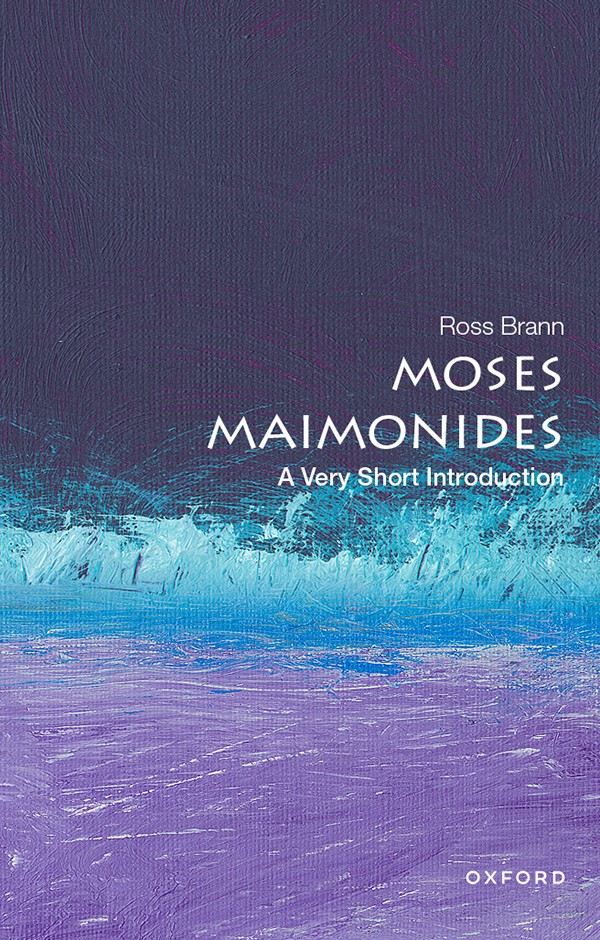Moses Maimonides (1138-1204), one of the most significant intellectual figures of the medieval period,worked as a physician, thought like a scientist, and served as a leader of the Jewish community in Cairo. He regarded the goal of human life - the culmination of all other pursuits - to be the attainment of wisdom, according to a new overview of his life and work.
"He moved seamlessly between specialized, private and public Jewish and Muslim spheres," said Ross Brann, the Morris Escoll 1916 Director of Jewish Studies, the Milton R. Konvitz Professor of Judeo-Islamic Studies and Stephen H. Weiss Presidential Fellow in the College of Arts and Sciences (A&S).
In Moses Maimonides: A Very Short Introduction, Brann presents the rabbi and philosopher's cultural background, world and thought. He also offers a detailed picture of the cultural richness of the medieval Islamic Mediterranean and its Jewish communities.
Brann, who studies the intertwined cultural histories in the medieval Islamic Mediterranean, particularly Jewish and Muslim, said the key to understanding the life and work of Maimonides is to recognize how he applied the rational methods he used as a scientist and physician to all his work.
"The diagnostic and remedial method was no mere metaphor for confronting what ailed the body or soul of a person or society," Brann wrote. "Rather, Maimonides' scientific-philosophical perspective on human existence defined his understanding of the Torah's purpose in regulating individual well-being, communal welfare and social good that was his abiding concern and life's mission."
Maimonides was born in Cordoba, Spain, and lived the first years of his life in the intellectual center of al-Andalus (Islamic Spain) - the largest metropolis in Europe at the time. "Like all human beings,Maimonides was shaped by his time and place," Brann said. "Arabic was his mother tongue and, as with other Jewish religious and literary intellectuals, he was deeply immersed in Arabo-Islamic culture alongside Jewish tradition."
Surviving letters written to him and from him show a portrait of a doting father to his one son, Abraham; a caring physician with a withering daily schedule; a bereaved older brother (his brother David drowned during a 1176-1177 sea voyage); and a forceful communal leader.
One of Maimonides' biographers refers to him as "one of civilization's greatest minds," Brann said. Central to the book is Maimonides' written canon. Beginning with his "Commentary on the Mishnah" and culminating in the 14-volume "Mishneh Torah" ("Code of Jewish Law"), Maimonides systematized all of rabbinic law.
"In this monumental work, Maimonides reorganized and tried to finalize Jewish law in its entirety to make it accessible to people without rabbinic expertise," Brann said. "His other innovation was to incorporate basic theological principles into a legal corpus."
Maimonides also wrote many other works in several disciplines for both elite and popular audiences, including many short works on medical issues.
In his own time, Maimonides was a revered yet controversial figure, Brann said. He endeavored to rid his community of popular superstitious, intellectually and religiously unfounded beliefs and practices. He was also criticized for presenting his "Code of Jewish Law" as authoritative and for the "Guide for the Perplexed," his great philosophically minded book addressed to the intellectual elite. Today, many read him selectively or in a predetermined manner.
Above all, Moses Maimonides was a "religious humanist par excellence," Brann said. "In teaching, I'm drawn especially to the many places in his various works which reflect that perspective," he said, "as well as those in which he insists that science, philosophy and Torah lead to true felicity."
Kate Blackwood is a writer for the College of Arts and Sciences.







